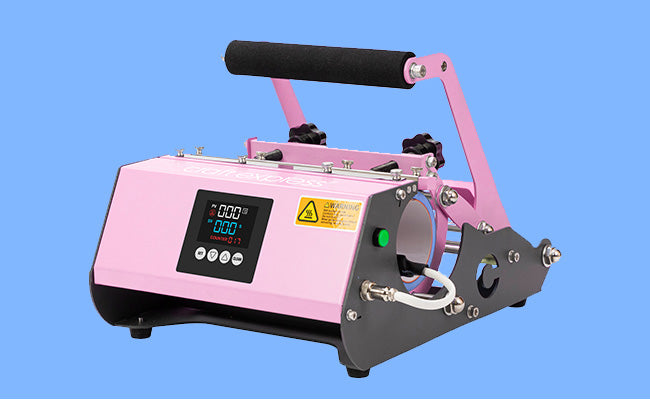
How to Set Up a Profitable Etsy Store: A Step-by-Step Guide
Opening an Etsy shop is a great way to turn a creative hobby into a successful online business. With millions of buyers searching for handmade, vintage, and unique items, Etsy provides a powerful platform for craft entrepreneurs. However, simply setting up a shop is not enough—you need a strategy to attract customers, optimize product listings, and price your items for profit.
This step-by-step guide covers everything you need to know to create a profitable Etsy store, from setting up your shop to marketing your products effectively.
Step 1: Setting Up Your Etsy Shop the Right Way
Before you start selling, it’s important to properly set up your Etsy store to ensure a professional and trustworthy shopping experience for customers.
1. Create Your Etsy Seller Account
-
Visit Etsy.com/sell and click "Get Started."
-
Choose a shop name that is simple, memorable, and relevant to your niche.
-
Set your shop’s country, currency, and language preferences.
Pro Tip: Before finalizing a shop name, check if the matching Instagram handle and website domain are available to maintain brand consistency.
2. Customize Your Shop Settings
-
Set clear policies for refunds, shipping, and processing times.
-
Upload a professional logo and banner to enhance your shop’s visual appeal.
-
Write an engaging “About” section to share your story and explain what makes your products unique.
Example:
Instead of “I make custom tumblers,” try:
"I started this shop to bring creativity to everyday items. Each tumbler is crafted with high-quality materials and designed to brighten your day."
A well-structured shop builds trust and helps convert visitors into buyers.
Step 2: Creating High-Quality Product Listings
Your listings are the heart of your Etsy shop. They determine whether a customer clicks, buys, or keeps scrolling.
1. Take Professional Product Photos
-
Use natural light or a ring light for clarity and true colors.
-
Choose clean, neutral backgrounds or simple lifestyle setups.
-
Capture multiple angles, such as:
-
Front and side views
-
Close-ups of details
-
Lifestyle shots
-
Size reference (e.g., item held in hand)
-
Pro Tip: If you offer custom options, show different variations in your photos.
2. Write an SEO-Optimized Title
-
Use clear, descriptive titles with common search terms.
-
Include keywords that real customers would type into Etsy.
Example:
Instead of “Personalized Mug,” try:
"Custom Name Coffee Mug – Personalized Gift for Mom, Teacher, or Best Friend"
3. Write a Compelling Product Description
The first two lines are key—they appear in search previews.
Be sure to include:
-
Product features (size, materials, customization options)
-
Usage ideas (gift occasions, décor, everyday use)
-
Shipping and processing details
Example:
"Looking for the perfect personalized gift? This custom coffee mug is made with high-quality sublimation printing that won’t fade or peel. Great for Mother’s Day, teacher appreciation, or birthdays."
4. Use All 13 Tags
-
Etsy allows 13 tags—use all of them to improve visibility.
-
Mix broad and specific tags (e.g., "Custom Mug", "Teacher Gift", "Coffee Lover Present").
-
Include holiday or event-related keywords like "Mother’s Day Gift" or "Christmas Gift".
Pro Tip: Use tools like eRank or Marmalead to research trending Etsy keywords.
Step 3: Pricing for Profit
Many new Etsy sellers undercharge. Your pricing should cover all costs and generate profit.
Use This Pricing Formula:
(Materials + Labor + Overhead) × 2 = Wholesale Price
Wholesale Price × 2 (or 2.5) = Retail Price
Example: Sublimated 20oz Tumbler
-
Materials: $6.00
-
Labor: $5.00
-
Overhead (fees, packaging, marketing): $4.00
-
Total Cost: $15.00
-
Wholesale Price: $15 × 2 = $30.00
-
Retail Price: $30 × 2 = $60.00
Pro Tip: Higher prices often signal higher quality. Don’t be afraid to charge what your work is worth.
Step 4: Marketing Your Etsy Store
While Etsy offers some built-in traffic, external marketing is key to growing your audience and boosting sales.
1. Use Instagram and TikTok
-
Post behind-the-scenes clips of your creative process and order packing.
-
Share customer reviews and testimonials to build trust.
-
Use popular audio and relevant hashtags to expand your reach.
2. Promote on Pinterest
-
Pinterest functions like a visual search engine. Pin high-quality images with keyword-rich captions.
-
Create seasonal boards like “Gifts for Teachers” or “Holiday Gift Guide.”
Pro Tip: Pinterest is a top traffic driver for Etsy shops. Don’t overlook it.
3. Offer Time-Sensitive Promotions
-
Run limited-time offers like “10% off for first-time customers.”
-
Offer free shipping when possible. Etsy gives priority to listings with free shipping in search results.
Final Steps to Launch a Successful Etsy Shop
To create a profitable Etsy business, follow these core strategies:
-
Set up a professional, branded shop with policies, logo, and story.
-
Optimize each listing with quality photos, SEO-friendly titles, and detailed descriptions.
-
Price your products for profit, not just to compete.
-
Promote your shop consistently on social media and Pinterest.
Action Steps for Etsy Sellers
-
If you haven’t opened a shop yet, go set one up today at etsy.com/sell.
-
If you already have a shop, update at least three listings using the tips above.
-
Start promoting your products through Instagram, Pinterest, and TikTok to reach new customers.
By applying these steps, you’ll increase visibility, attract more buyers, and grow a sustainable handmade business on Etsy.




Leave a comment
This site is protected by hCaptcha and the hCaptcha Privacy Policy and Terms of Service apply.